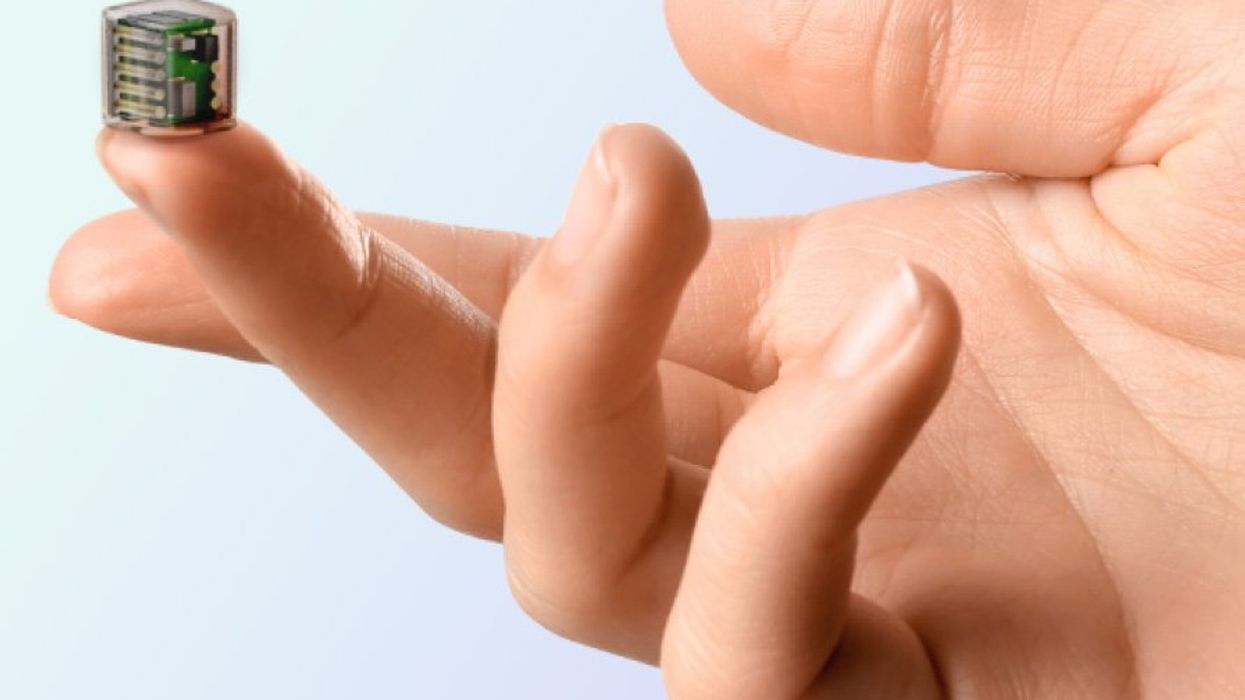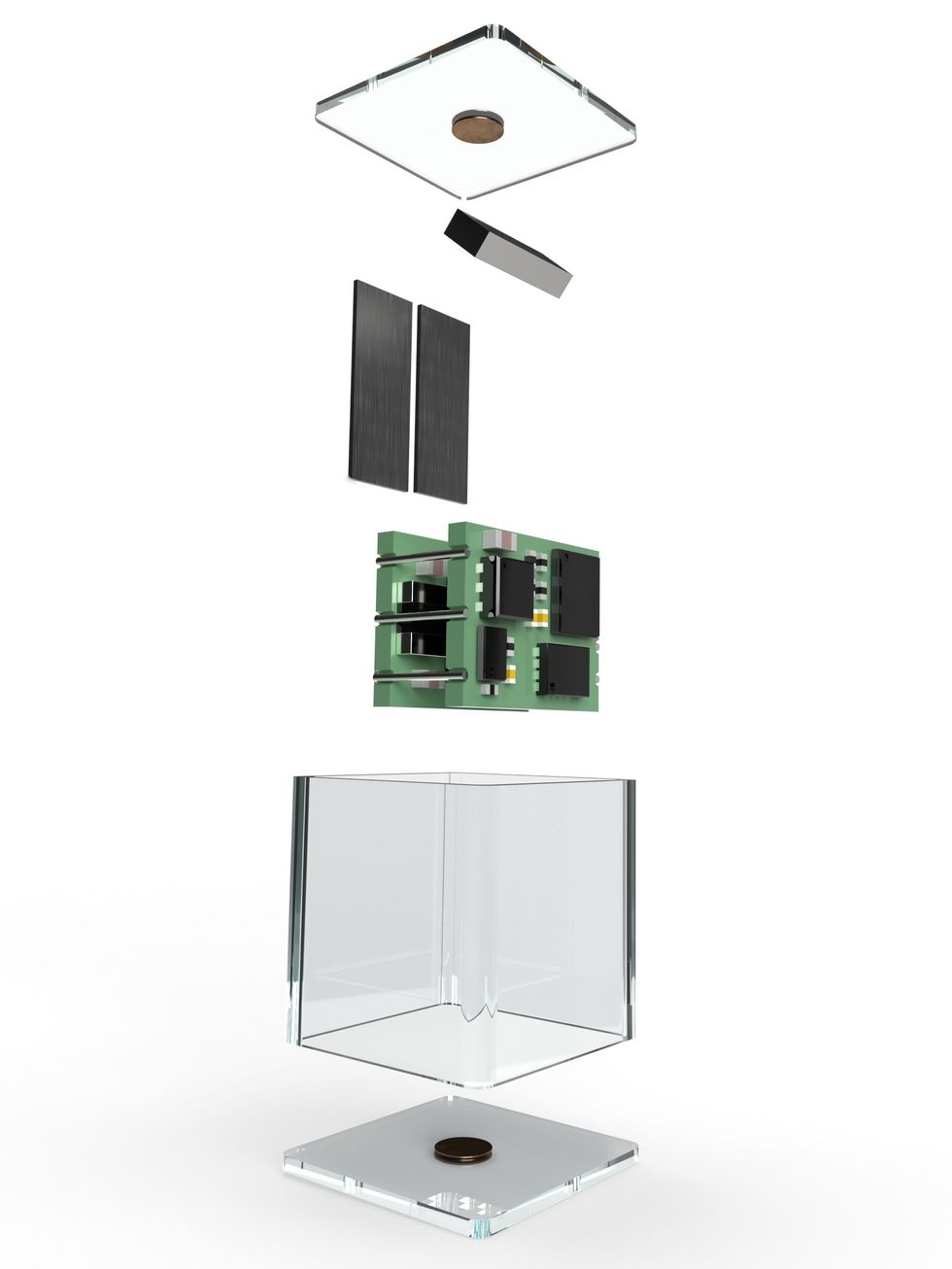Superficial Brain Implant Could Have a Deep Impact

Two types of neural stimulation have proved themselves in the clinic. There's deep brain stimulation (DBS), which requires implanting electrodes deep in the brain tissue and wiring them to a battery-powered pulse generator in the chest. It involves major surgery, but once the technology is in place, patients can go about their lives without issue-until the battery needs replacing in a few years. And there's transcranial magnetic stimulation (TMS), in which a wand delivers powerful magnetic pulses from outside the head to alter the activity of brain cells. No surgery is required, but patients need to be close to a clinic, because they'll go in for daily treatments for about six weeks.
Now a new technology could offer the best of both worlds: a minimally invasive neurostimulation device that patients could operate in their own homes.
In a preprint paper posted to the server medRxiv, neural engineers describe a tiny wireless device that could be implanted below the skull but above a protective membrane called the dura mater that surrounds the brain. Study coauthor Jacob Robinson, a professor at Rice University, tells IEEE Spectrum that he expects the procedure would take less than 30 minutes. Afterward, the patient could do at-home treatments with the help of a wearable headset that transmits power and instructions to the implant. Robinson is also the cofounder of Motif Neuroscience, a startup that's trying to commercialize the technology.
The real breakthrough," he says, is the device's wireless power delivery system. It starts with a transmitter in the wearable headset that emits a magnetic field. Within the implant is a magnetoelectric material that vibrates in the presence of a magnetic field, and another component that turns those vibrations' mechanical energy into electricity.
This technique is somewhat similar, Robinson says, to the work that's been done pairing ultrasound with a piezoelectric crystal, which turns sound-wave vibrations into electricity and can power a tiny neural implant. The challenge with ultrasound is that it's tough to align with the focal spot, and it's tough to get through air or bone because there are all these reflective interfaces," says Robinson.
 The new implant is powered by a magnetoelectric film that vibrates in the presence of a magnetic field.Motif Neuroscience
The new implant is powered by a magnetoelectric film that vibrates in the presence of a magnetic field.Motif Neuroscience
In a proof-of-concept experiment with a human volunteer who was already undergoing brain surgery, Robinson's team demonstrated that their tiny device (about 9 millimeters across) could stimulate the brain through the dura mater. They placed the implant on the dura and above a part of the brain called the motor cortex, which controls movement; when they turned the device on, the volunteer's hand contracted. The experiment was similar to how TMS clinics calibrate their devices: At the beginning of a patient's treatment, the technician positions the wand over the motor cortex and turns up the power until a muscle in the patient's hand contracts.
However, it's a far cry from making a hand twitch to providing a patient lasting relief from an ailment, such as depression. Indeed, depression is already treated with TMS, and it has also been a target application in DBS trials. Helen Mayberg, a leading DBS researcher and a neurologist in the Mount Sinai Health System, says she looks forward to seeing how this technology evolves for use in brain locations outside of the motor cortex."
The researchers' next step-and it's a big one-will be an FDA-approved clinical trial to see if their brain stimulator has a therapeutic effect on people with depression. If it passes that test, their technology could be considered for many other neuropsychiatric disorders that have been the focus of recent promising trials with TMS, including obsessive-compulsive disorder, addiction, Alzheimer's, and PTSD.
Maysam Chamanzar, an associate professor at Carnegie Mellon University who works on next-generation neural interfaces, says he's impressed with the results in the preprint. Using the magnetoelectric effect to transfer energy into the tissue is an interesting idea," he tells Spectrum. The wirelessly transferred power and the achieved voltage levels at the implant are encouraging." Chamanzar says he'd like to see long-term data about both the reliability and safety of the device. He also wonders whether the device can be miniaturized further without sacrificing too much efficiency, and whether it can precisely target small brain regions through the dura mater. But this work shows a great first step," he says.
Robinson believes that Motif's technology has several advantages over TMS. He notes that some studies have shown that increasing the duration or frequency of TMS treatments may yield better results, and Motif's at-home treatment regime would make it easy to change those variables. What's more, future clinical trials could put several implants in different places to change brain activity at multiple locations in a neural circuit. Finally, the device can do more than just stimulate the brain; it can also record its electrical activity, allowing for data collection on the effects of the treatment. There's a great deal of interest in closed loop" systems, which use a patient's response to stimulation to adjust that stimulation.
Robinson says the technology's design leaves plenty of room for future improvements. The exciting thing about separating the implant and the wearable," he says, is that the implant can have features like stimulation and recording, and later we can update the wearable to support things like closed-loop neuromodulation. Our vision is that over time we unlock patient-specific and adaptive therapies using that same implant, or perhaps a network of implants."